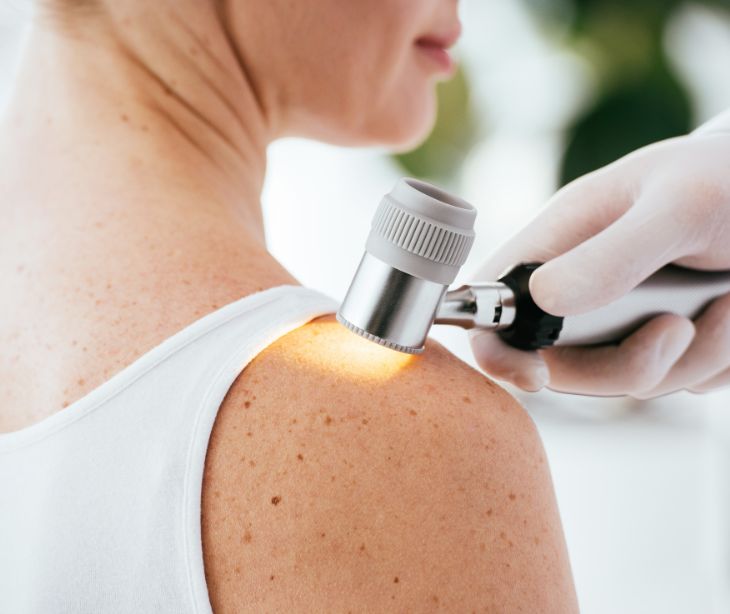3 min read
Enhancing patient dermatology education through HIPAA compliant texts
Caitlin Anthoney April 22, 2024

Integrating HIPAA compliant texts into dermatological patient education can improve patient care while upholding privacy standards. Providers can deliver personalized and secure educational content, which could help reduce treatment mismanagement.
Research on digital strategies for dermatology patient education states: “Dermatologists should strive to keep up with this trend by staying informed about the digital patient education options that are available and which tools they can use to more effectively share their knowledge with patients.
Electronic health education has a powerful potential, but it is up to physicians to direct patients to the appropriate resources and education tools that will support their clear understanding of all elements of care.”
More specifically, “in dermatology, patient education alone can essentially be a management strategy for numerous conditions (e.g., identifying which triggers patients with contact dermatitis should avoid). On the other hand, a lack of patient knowledge can result in perceived noncompliance or treatment failure, when in reality there has simply been a communication gap between the physician and the patient.
For example, if a patient notices little to no improvement of a fungal infection after applying ketoconazole shampoo 2% to affected areas and immediately rinsing, this does not necessarily constitute a treatment failure, as the patient should have been educated on the importance of leaving the shampoo on for 5 minutes before rinsing.”
Potential challenges in patient dermatology education
1. Complexity of information: Dermatology often involves complex medical terminology and concepts that can be difficult for patients to grasp.
2. Information overload: Patients may feel overwhelmed by the volume of information available, leading to confusion and misinformation.
3. Language and literacy barriers: Language barriers and varying levels of health literacy can hinder effective communication between healthcare providers and patients.
4. Privacy concerns: Discussions about skin conditions may involve sensitive information, raising privacy concerns under HIPAA regulations.
Read also: Addressing social determinants of health with HIPAA compliant texts
Patient education and HIPAA compliant text messaging
The study above states that “The increasing availability of technology for electronic health information can be both beneficial and challenging for dermatologists.”
It then suggests, “Physicians should explore and familiarize themselves with the tools that are available and assess their effectiveness by communicating with patients about their perception and understanding of their conditions.”
Providers can use a HIPAA compliant text messaging platform, like Paubox, to deliver clear and comprehensive patient education. This could help patients understand their conditions, adhere to treatment plans, and make informed decisions about their health.
Tips for HIPAA compliant text messages on dermatological education
1. Personalized educational materials: Develop educational materials tailored to specific dermatological conditions, treatment options, and preventive measures. These materials should be written in clear, understandable language, avoiding medical jargon.
2. Secure messaging platforms: Use a secure messaging platform, like Paubox, to deliver educational texts directly to patients. These platforms safeguard patients’ protected health information (PHI), making it only accessible to authorized individuals.
3. Multilingual support: Provide educational materials in multiple languages to accommodate diverse patient populations. This helps overcome language barriers and helps more patients access dermatological health information.
4. Patient authorization: Obtain explicit authorization from patients before sending educational texts and provide clear opt-in instructions for receiving future communications.
5. Training for healthcare providers: Ensure that healthcare providers receive training on HIPAA compliant texting.
6. Regular updates and review: Regularly update educational materials to reflect the latest advancements in dermatology and review them for relevance. Get patient feedback to identify areas for improvement.
7. Collaboration with dermatology experts: Collaborate with dermatology experts, patient advocacy groups, and medical organizations to develop high-quality educational materials that address the specific needs of patients.
8. Monitoring and evaluation: Monitor the efficacy of HIPAA compliant text messaging in improving patient education outcomes. Collect data on patient engagement, satisfaction levels, and adherence to treatment plans to inform future initiatives.
FAQs
Why is patient education important in dermatology?
Patient education helps people understand their conditions, adhere to treatments, and make informed decisions, which can improve health outcomes.
Are HIPAA compliant texts a substitute for in-person dermatology consultations?
No, HIPAA compliant texts on dermatological education are meant to supplement in-person care by providing additional information and support.
How do personalized texts enhance the effectiveness of patient education in dermatology?
Providers can personalize texts according to the needs of each patient, making the information more relevant and applicable. This tailored approach helps improve patient understanding, and adherence to treatment regimens can lead to better health outcomes as patients become more informed about managing their condition.
Go deeper: Personalization in text message-based interventions across different demographics
Subscribe to Paubox Weekly
Every Friday we'll bring you the most important news from Paubox. Our aim is to make you smarter, faster.



